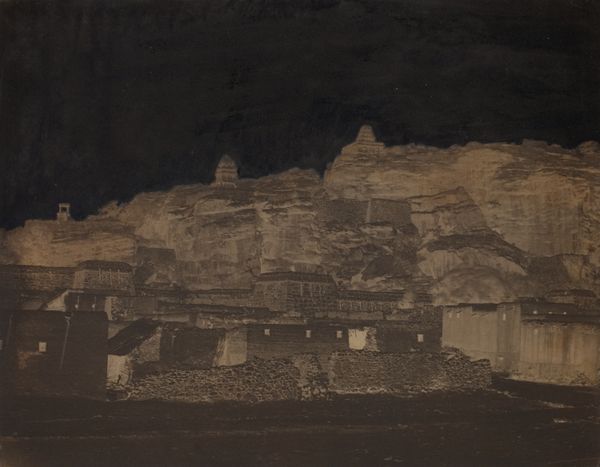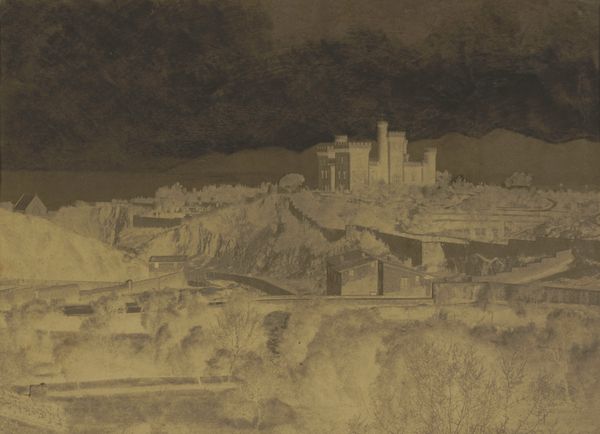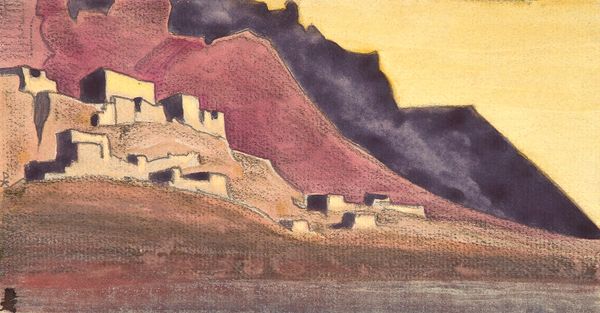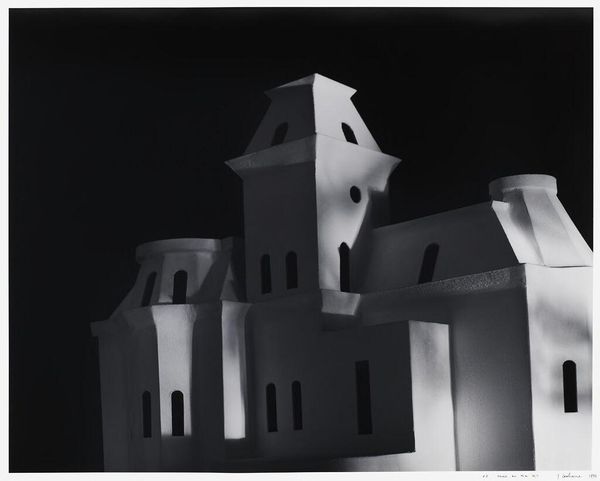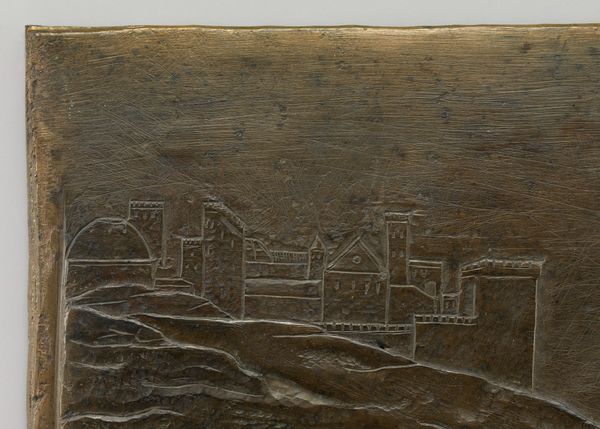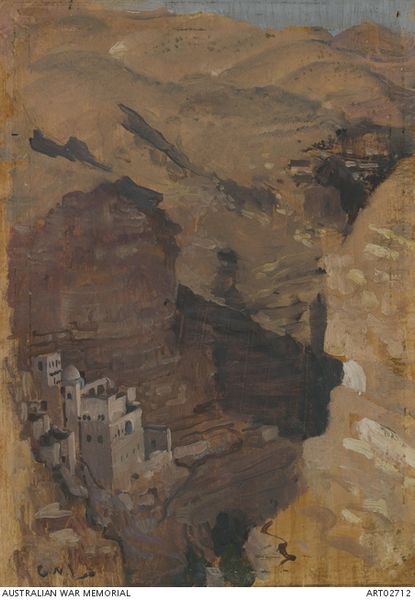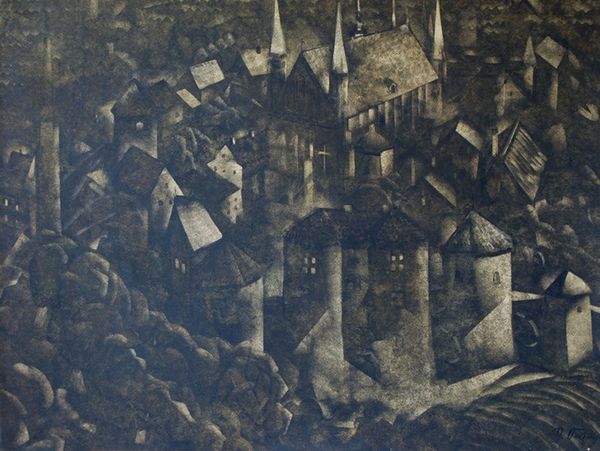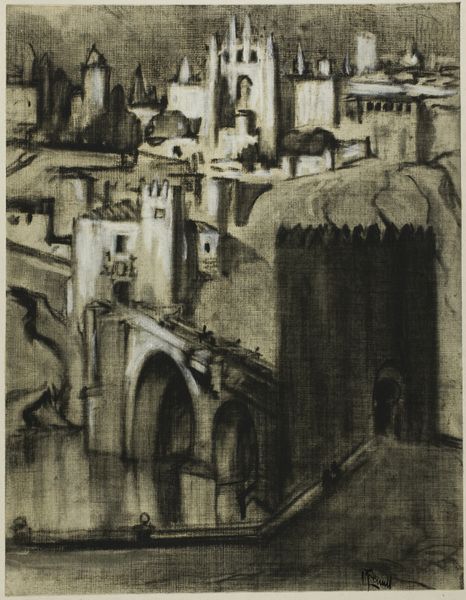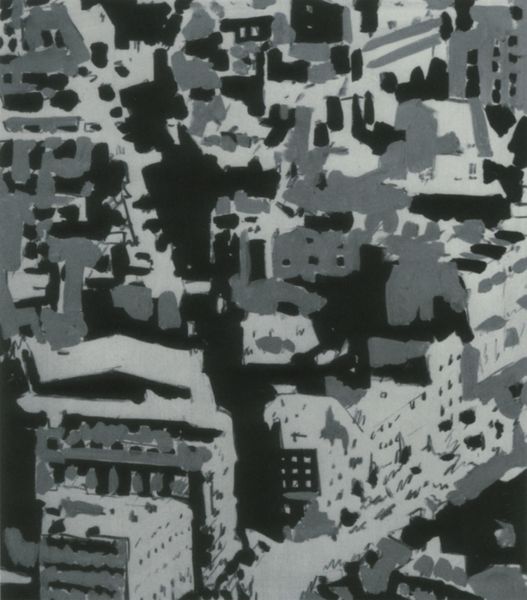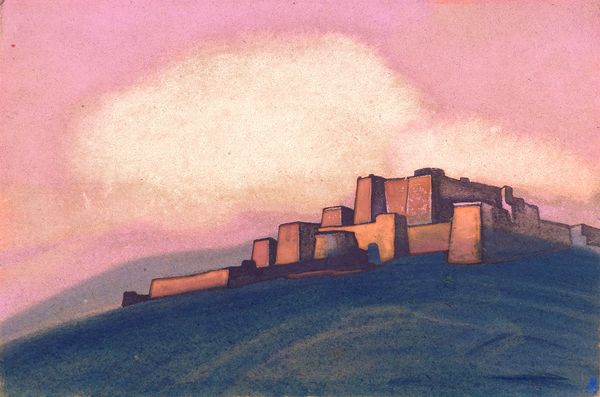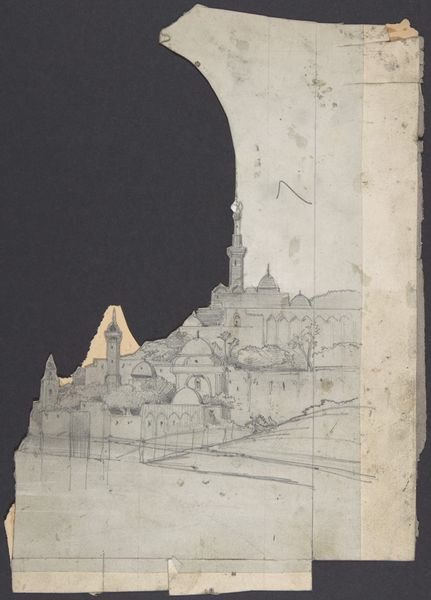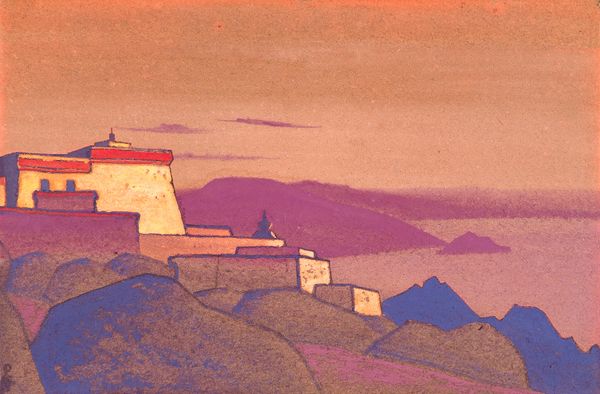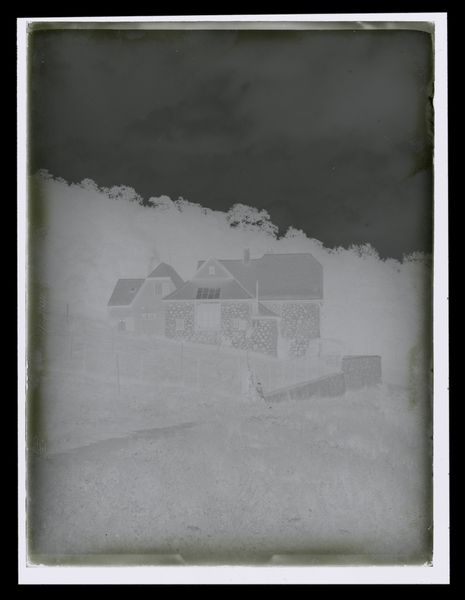
Dimensions: image/sheet: 37.8 × 46.4 cm (14 7/8 × 18 1/4 in.)
Copyright: National Gallery of Art: CC0 1.0
Curator: Looking at John Murray's albumen print, "Taj Mahal from the East," created between 1858 and 1862, I’m immediately struck by how it intertwines ruin and icon. Editor: It’s the contrast, isn’t it? The starkness of the crumbling foreground structures throws the Taj Mahal itself into an almost ethereal relief. There's a tension between decay and enduring beauty. Curator: Indeed. The Taj Mahal, of course, carries immense cultural weight as a symbol of love, loss, and the Mughal Empire's grandeur. This albumen print serves to add to that narrative. It offers a vision beyond the romanticized version. Editor: Which, in its time, was inextricably tied to colonial perspectives. How do you read the ruined structures, given that Murray was British? Do they represent a specific point of view of the colonizer? Curator: Well, the romantic ruins can be read through a few symbolic lenses. Consider the prevailing Romanticist sensibilities: ruins suggest the passage of time, the transience of earthly power and even beauty, all themes embraced at the time. Editor: It certainly feeds into that 19th-century Orientalist gaze, doesn’t it? Framing a glorious, complex culture through the lens of its past, its supposed decline. Are we meant to view the British presence as restoring, or even improving on, what came before? Curator: I believe that these romantic images, with their inherent contrasts, capture a civilization perceived at its height, but viewed through the ever-present awareness of mortality, also mirroring the fragility of human endeavor in its quest for immortality. There’s a strong reminder here of memento mori, as well. Editor: That’s a powerful point. Thinking about it now, there's also a dialogue between visibility and invisibility here. What Murray chooses to show—and, more importantly, perhaps, how he chooses to show it—tells us a lot about the politics of representation inherent in these early photographs. Curator: Precisely. I hadn't considered the invisibility aspect, how we impose our cultural values to represent a memory to others. It seems that this albumen print allows the symbolic meaning to permeate on a deeper level. Editor: Thank you.
Comments
No comments
Be the first to comment and join the conversation on the ultimate creative platform.
